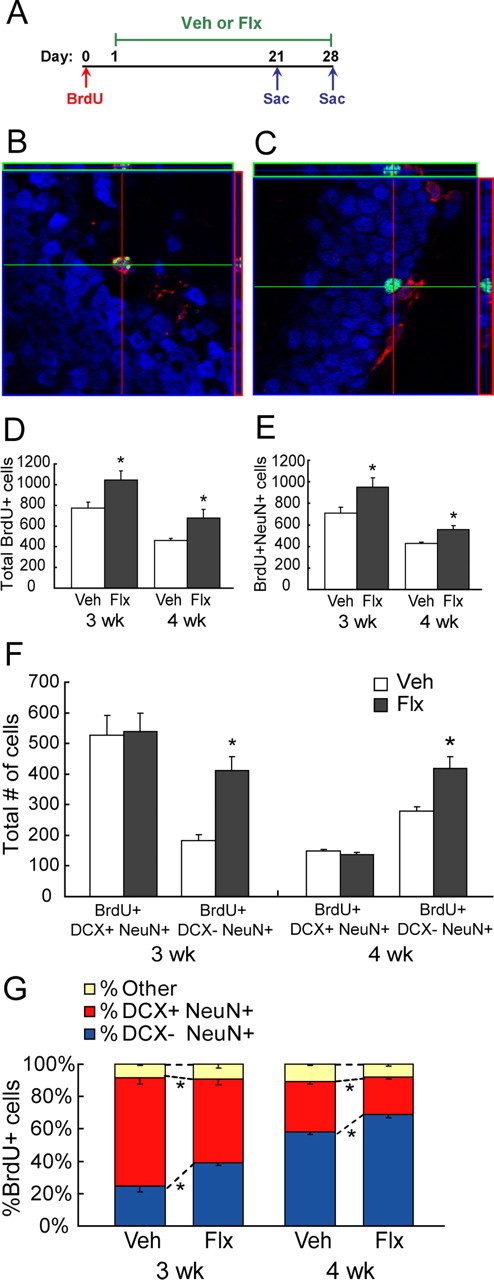Figure 4.

Chronic fluoxetine facilitates the maturation of newborn granule cells. A, Schematic diagram of BrdU administration protocol to examine survival of newborn cells (n = 5–6 per group). Mice were given four BrdU injections (75 mg/kg) over 8 h on day 0. Vehicle (Veh) or fluoxetine (Flx) treatment began on day 1, 24 h after the last BrdU injection. Mice were killed 3 or 4 weeks later (Sac). B, C, Confocal images of BrdU (green), DCX (red), and NeuN (blue) immunohistochemistry. D, Chronic fluoxetine increased the number of total BrdU+ cells 3 and 4 weeks later compared with vehicle-treated groups (ANOVA, F (1,16) = 12.63, *p = 0.003 for treatment; F (1,16) = 24.50, p < 0.0001 for time). E, Chronic fluoxetine increased the number of BrdU+NeuN+ cells 3 and 4 weeks later (ANOVA, F (1,16) = 8.89, *p = 0.01 for treatment; F (1,16) = 30.12, p < 0.0001 for time). F, Chronic fluoxetine increased the number of BrdU+DCX−NeuN+ cells (ANOVA, F (1,14) = 30.65, *p < 0.0001 for treatment; F (1,14) = 2.38, p = 0.14 for time) but not the number of BrdU+DCX+NeuN+ cells (ANOVA, F (1,14) = 1.47 × 10−4, p = 0.99 for treatment; F 1,14 = 62.52, p < 0.0001 for time). G, Chronic fluoxetine decreased the proportion of BrdU+NeuN+ cells that are DCX+ (percentage of BrdU cells) but increased the proportion that are DCX− (ANOVA, F (1,14) = 18.98, *p = 0.0007 for treatment; F (1,14) = 132.64, p < 0.0001 for time).
